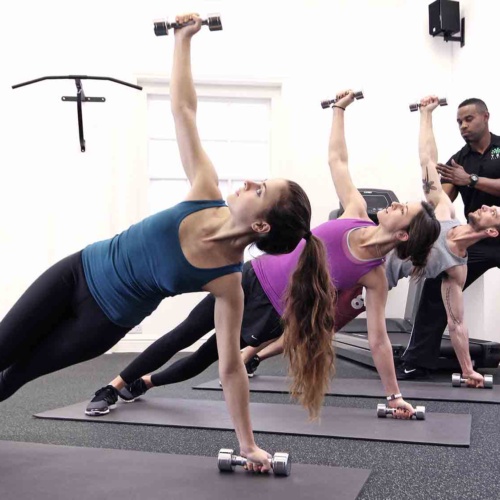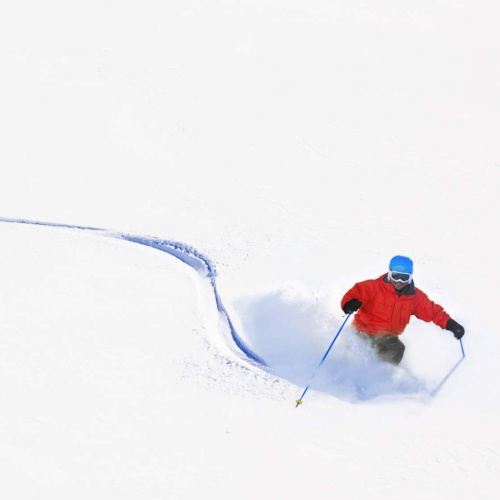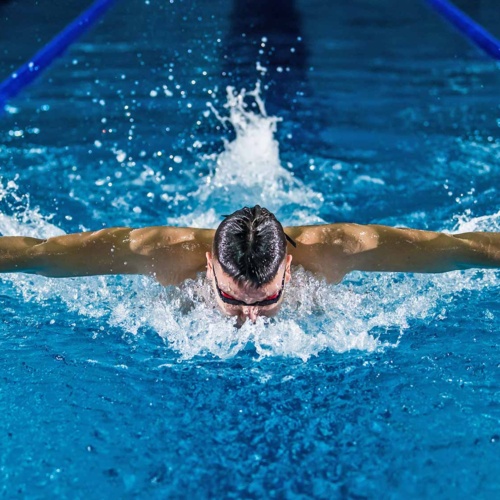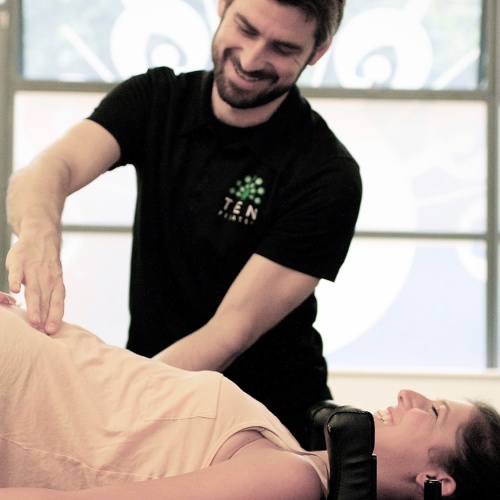If you live in the 21st century, sit at a desk, do exercise (any kind) and have tight muscles or want to prevent build up of tension (preventing injury), you should have a foam roller – and actually use it.
I incorporate the foam roller into most of my patient management programmes, and use it regularly myself to avoid injuries (I average over 1000km of cycling a month, and it’s not unusual for me to spend an hour on the roller after a long ride).
A foam roller is simply a round cylinder of foam that comes in different densities and lengths. Think of it like your personal masseuse.
You can us it to ease tension and lengthen muscles/joints, help improve your posture, get your upper back straighter, ease tension in your shoulders, release your glutes, ITB, TFL, calves and quads.
NB Foam rolling will and should be painful. But not unbearable.
Here are my top 6 foam roller exercises:
1. Upper back rolling – Eases tension between the shoulders, corrects slouching, extends upper back
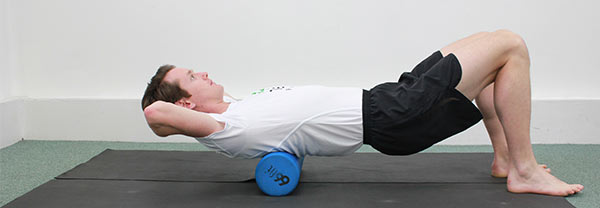
- Start with roller across the shoulder blades, support head with hands, lift hips, roll from shoulder blades to base of neck and repeat x10, breathe out to roll deeper.
- Do not roll lower than shoulder blades to protect the lower back.
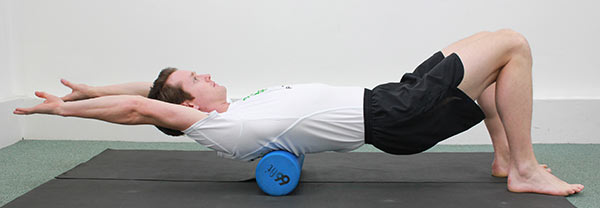
- Progression: extend arms above head to create more pressure & a deeper massage.
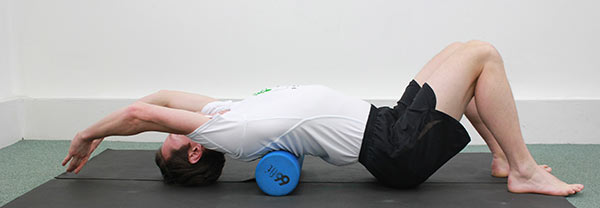
- Thoracic extension: lower hips to floor first, support head with hands. Slowly lower shoulders towards floor to extend upper back.
2. Thread the needle/thoracic rotation – restore mobility and stretch upper back
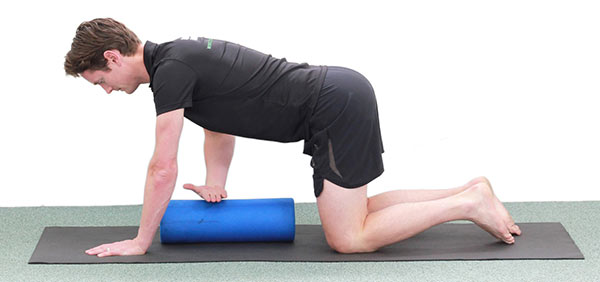
- Kneeling, place supporting hand in front of roller.
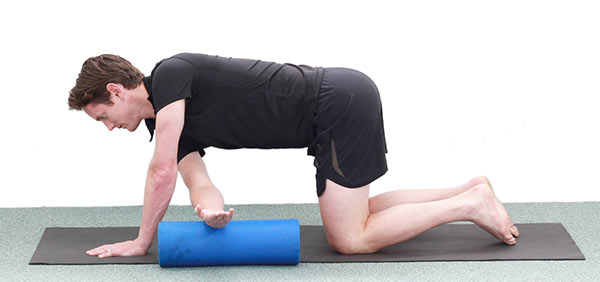
- Place back of other hand on roller, push through the ‘tunnel’ to rotate upper back. Keep supporting arm straight and shoulder hight throughout.
3. ITB (outside of thigh – hip to knee) – reduces the tension created by ANY lower limb exercise
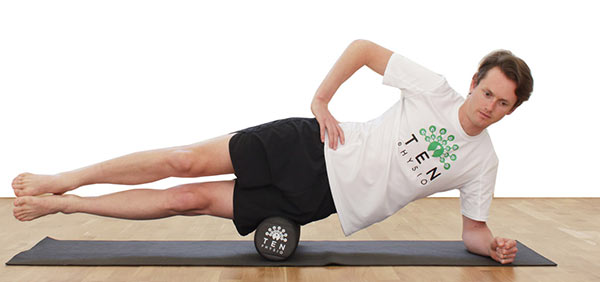
- Start with the roller mid thigh.
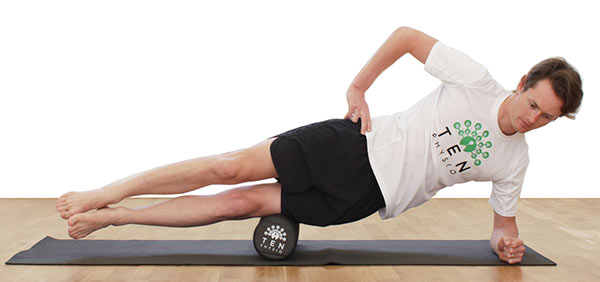
- Use the arm to roll slowly up to the hip and back to knee.
- Continue for 2 mins.
- Regression – drop top foot to floor to reduce pressure and aid movement.
4. Lateral quads/TFL – the most effective exercise for reducing risk of overuse knee injuries i.e runner’s knee & pressure under the kneecap
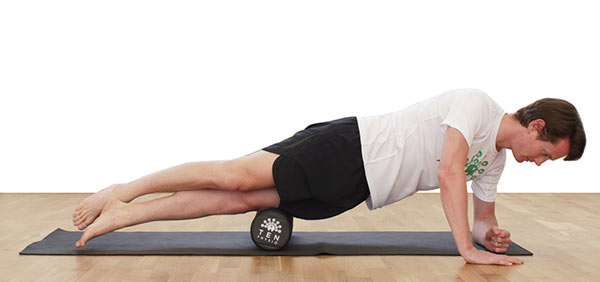
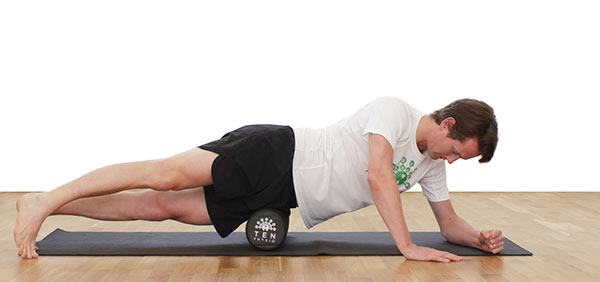
- Set up as for ITB but roll 20° forwards.
5. Calf/Achilles roll – reduce tension and stiffness in the calves created by anything from running to stilettos
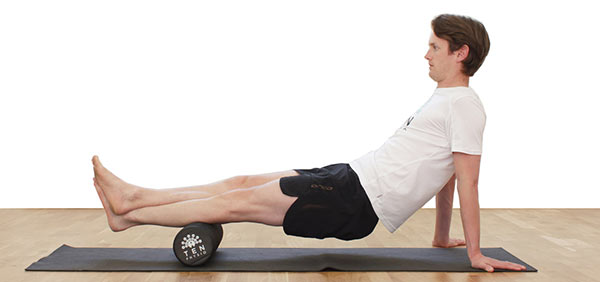
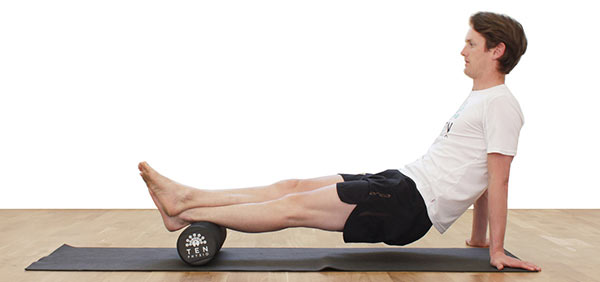
- Sit onto the floor, place one calf on the roller, cross the other leg over.
- Lift hips and roll from achilles to top of calf making sure to rotate the leg to cover inside and outside of muscle/tendon.
6. Opening chest/lengthening spine
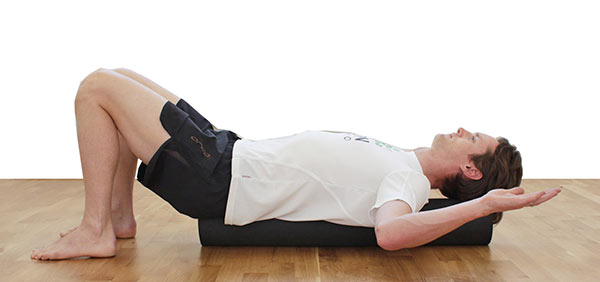
- You’ll need a long roller for this exercise (90 cm).
- Sit on one end of the roller, lie back so head is supported.
- Raise arms to 90°, elbows bent.
- Extend arms, but keep forearms parallel to ground.


